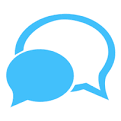 | Mahadevan M S |
 | Stew BiffThis is a somewhat complex question. The brain has a built-in potential for creativity. However, based on a person’s own brain advantage, the type of creativity that is easiest to access, may differ. For example:
Frontal Left Lobe: creative in setting and achieving goals, in analyzing data (research), and in problem-solving based on data.
Frontal Right Lobe: creative in artistic areas such as painting/drawing, writing stories/poems, interior design, and problem-solving in a crisis situation.
Right Posterior Lobes: creative in harmonizing activities such as singing, cooking, between people, with nature/animals, and in the environment.
Left Posterior Lobes: creative in tracking data (e.g., filing, data entry, accounting) and in providing services that are necessary to sustain life. |
 | RIZWAN AZMATBehavioral interview questions are the ones that ask you for specific examples of past work experiences. Studies have shown that the best way for hiring managers to predict future job performance is by understanding past performance.
These behavioral questions typically start with “Tell me about a time…” or “Give me an example of…” Each question focuses on a desired competency area (a few examples: communication skills, time management, creativity). |
 | cool omarCreativity is a phenomenon whereby something new and somehow valuable is formed. The created item may be intangible (such as an idea, a scientific theory, a musical composition or a joke) or an original physical object (an invention, a literary work or a painting).
Scholarly interest in creativity involves many definitions and concepts pertaining to a number of disciplines: psychology, cognitive science, education, philosophy (particularly philosophy of science), technology, theology, sociology, linguistics, business studies, songwriting, and economics, covering the relations between creativity and general intelligence, mental and neurological processes, personality type and creative ability, creativity and mental health; the potential for fostering creativity through education and training, especially as augmented by technology; and the application of creative resources to improve the effectiveness of teaching and learning. |
|
Hello, Guest!
Get personalized answers from people worldwide!
Preview:
|
|
|
|
 Loading experts... Loading experts... |



